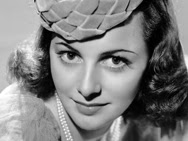Best Pictures #23: 1928-29 Academy Awards
My Pick for Outstanding Picture
My Pick for Outstanding Picture
No film
won more than one award at the 2nd Academy Awards for films released
between August 1st 1928 and July 31st 1929. The ceremony
was held on April 3rd, 1930. It was broadcast over the radio and every
Academy Awards ceremony to follow would be broadcast on either radio or
television. Like the rest of the film industry, it seems that the Academy
didn’t quite know what to do about talking pictures. According to 85 Years of Oscar by Robert Osborne by Robert Osborne, the official history of the Academy Awards, there was serious debate about having separate
categories for sound and silent movies. Ultimately there would not be separate categories and no nominations were publicly announced.
The films and persons listed as nominees for the 2nd Academy Awards
have been determined by historians using in house records.
It is
clear that the Academy still acknowledged the quality work being done in silent
films but they overwhelmingly favored the talkies with nominations and wins.
Many theaters at this time were still only equipped to show silent films, so
there was still a demand for silent movies. Many films at this time, The Broadway Melody included, had a
silent version made simultaneously as the sound version. Movie posters advertised “100%
ALL TALKING” and “HEAR WHAT YOU SEE!” to distinguish them from silent movies
with some bits of sound added in like The
Patriot and the previous year’s Unique and Artistic Picture winner, Sunrise. That demand however would drastically wane and by the time of the 3rd Academy Awards silent movies would be a thing of the past.
The
language of cinema would now contain an audio element, but this new tool would
take time to master. The technical sophistication
achieved by cinema thus far would be set back dramatically. Noisy cameras had
to be housed in giant immobile metal boxes so their sound wouldn’t be recorded
by the microphones. Those microphones had to be hidden in the set and actors
could not be too far away from that area of the set. Cinema would bounce back
and continue to grow and mature thematically and technically but not for a few years. It would be many years before the camera once again had the freedom
of movement as it did during the silent era. Just a year before the 2nd
Academy Awards there was no such thing as the “silent era,” there was only “the
movies.” Now, a distinct new era of cinema had begun.
My Pick
for Outstanding Picture 1928-29: The Broadway Melody
For the
2nd Academy Awards there was only one Best Picture category, still called
Outstanding Picture. The selection board of judges, still made up of only 5
people, chose the MGM musical The
Broadway Melody for Outstanding Picture, and I once again agree with the
Academy. The musical is a type of movie that could not exist before the advent
of sound. Though the musical had by this time achieved a maturity on stage, it
would take years to mature on screen. The
Broadway Melody is a good start for the genre. I can’t give a full and
complete judgement of the nominees since The
Patriot is sadly lost, but of the films I was able to see the most entertaining and
enjoyable was The Broadway Melody,
though it is an uneven film.
The Broadway Melody is not without its share of flaws,
including a less than likable leading male character, flimsy character
motivations, and a mostly stationary camera. It feels a bit unfair to criticize
the immobile camera of early sound films given the technical limitations of
sound recording, but it is difficult not to compare the cinematography of these
early sound movies to the limitless movement of camera in the silent movies
from the previous year. That is still only a minor complaint for me. I’d rather
watch a still camera shot with entertaining content than visually interesting
but meaningless camerawork. This movie moved along at a steady pace since scenes did not drag on just for the sake of hearing
the actors speak as they did with In Old
Arizona. The Broadway Melody is
filled with great songs, written by Nacio
Herb Brown and Arthur Freed, that have since become classics. However, my favorite thing
about The Broadway Melody is that with Hank, played wonderfully
well by Bessie Love, it has the most competent, interesting, and quasi-independent female character I’ve seen in any early Best Picture nominee thus far.
While watching
The Broadway Melody, you are aware
that you are watching the root of the movie musical. It has a simple story, but
this movie is really about the musical numbers. If its plot and set pieces seem
clichéd now, it is only because they have been repeated, reworked, and improved
in musical after musical. I would recommend ignoring the unfairly low score on RottenTomatoes.com and seeking this film out, especially if you are a fan of
musicals.













